I must admit: I really didn’t do Ronda justice on my first visit.
Back in 2015, I found myself in Ronda just as a quick and unplanned day-trip from Malaga. Entering the town from the train station through the modern part, the town didn’t seem so exciting at first. But when I got to its towering 120-meter tall bridge, Ronda had me dazzled. I gawked at the deep chasm cleaving right through the town. I strolled through its cobbled streets and took a hike down into the canyon.
But… after a while my excitement fizzled out and — perhaps discouraged by all the tour bus crowds in summer — I soon headed back to Malaga again.
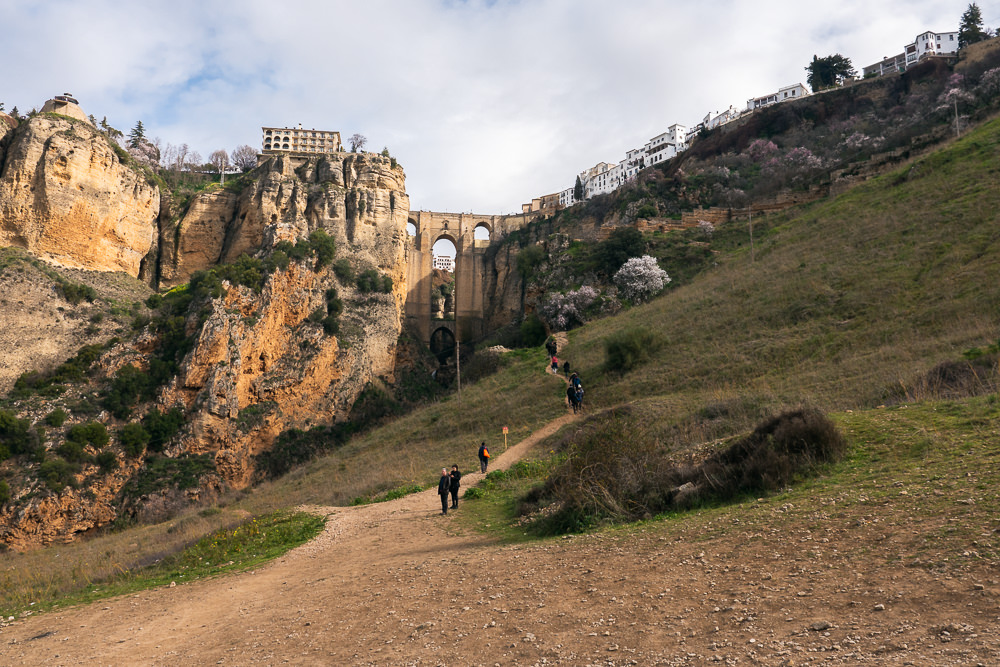
Recently I had a chance to return to Ronda in the Spanish region of Andalucia and spend a whole weekend there, which gave me a greater appreciation of this beautiful town. I got to spend more time seeing the sights and the wonderful landscapes.
Instead of making just a quick stop, I realized Ronda warrants at least a full day of exploring — or even a few days.
Plan your stay in Ronda
Staying in the valley
For our 3-day stay in Ronda, my girlfriend found some accommodation not inside the town but in the valley down below. It’s actually from here that you’ll get some of the most sweeping views of the town sitting on top of the limestone plateau.
Arriving at night via a cobblestone country road, my girlfriend suddenly yelled “HOLY SHIT!” as we turned a corner, not expecting to see the massive limestone cliffs and orange-lit bridge looming almost menacingly above us.
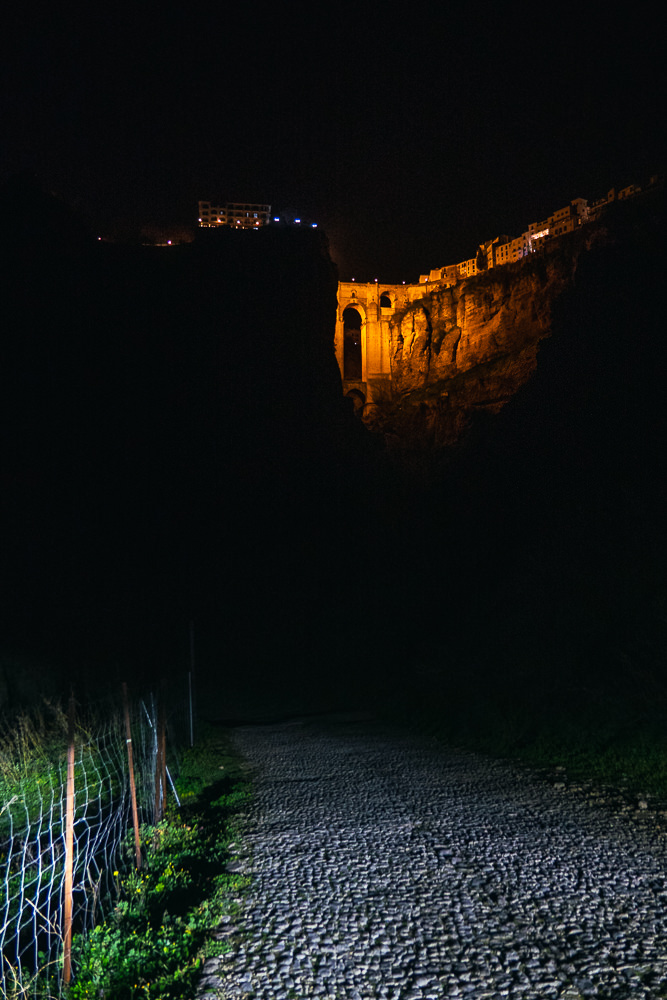
Speckled around this canyon along the Guadalevín River are several casas rurales (country guesthouses) as well as an albergue (hostel) with dormitories. If you have any chance to stay in this area, I highly recommend it. We stayed in one of the casas rurales and loved it.
To be fair, in the valley you’ll be a stiff hike removed from any the restaurants or shops, but in return you’ll be in a beautiful place among fields with horses, a rippling creek, and epic views of Ronda’s limestone cliffs.
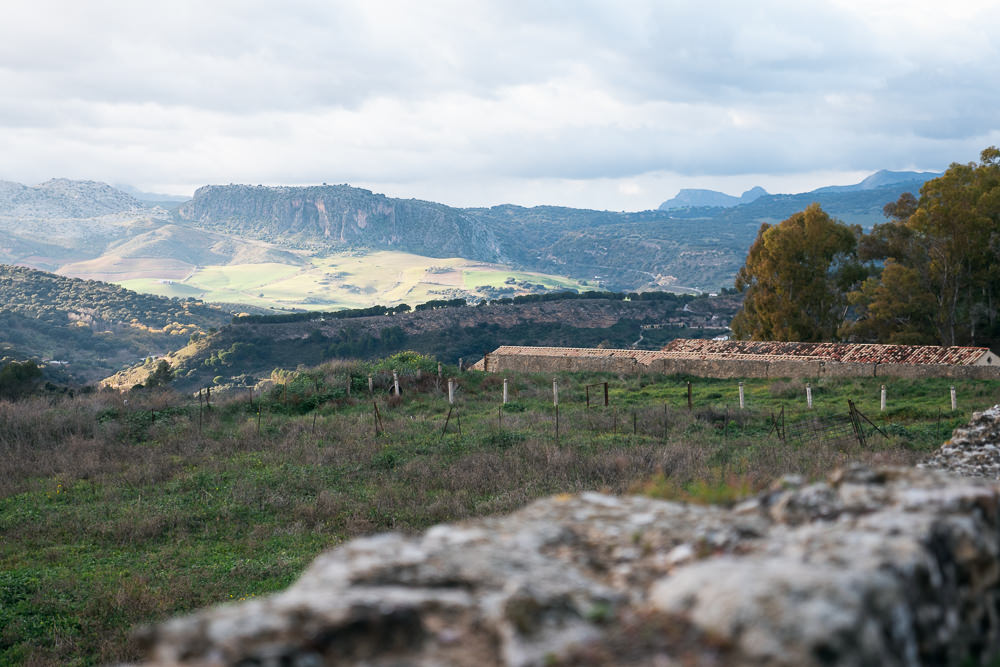
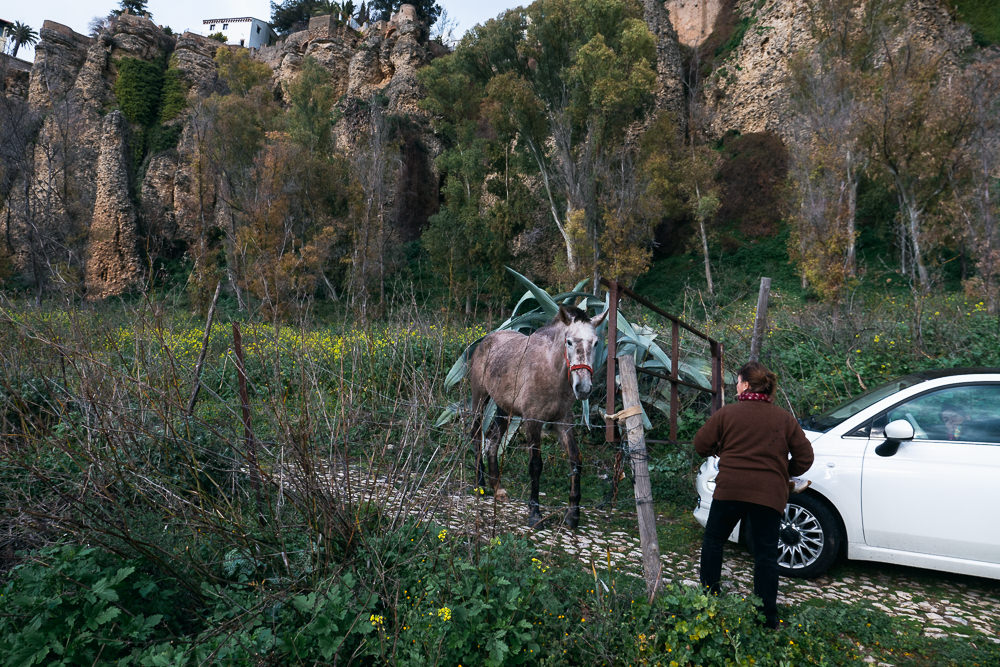
Visiting Ronda in January reminded me again of the advantages of traveling in the off-season. It was nice to be there without the crowds of summer.
In southern Spain, winter is not at all like it is further up north in Europe. In January the trees remain either green or wonderfully autumn-colored, temperatures still hit up to 12°C at times, and you don’t really see that muted blue-tinted air you get at higher latitudes.
I suppose you do have to be lucky not to get any rain during this time of year. Then again, the changeable weather often adds a beautiful contrast to the landscapes. The almond trees around Ronda were also in full pink and white bloom, making it feel very much like spring whenever the sun appeared.
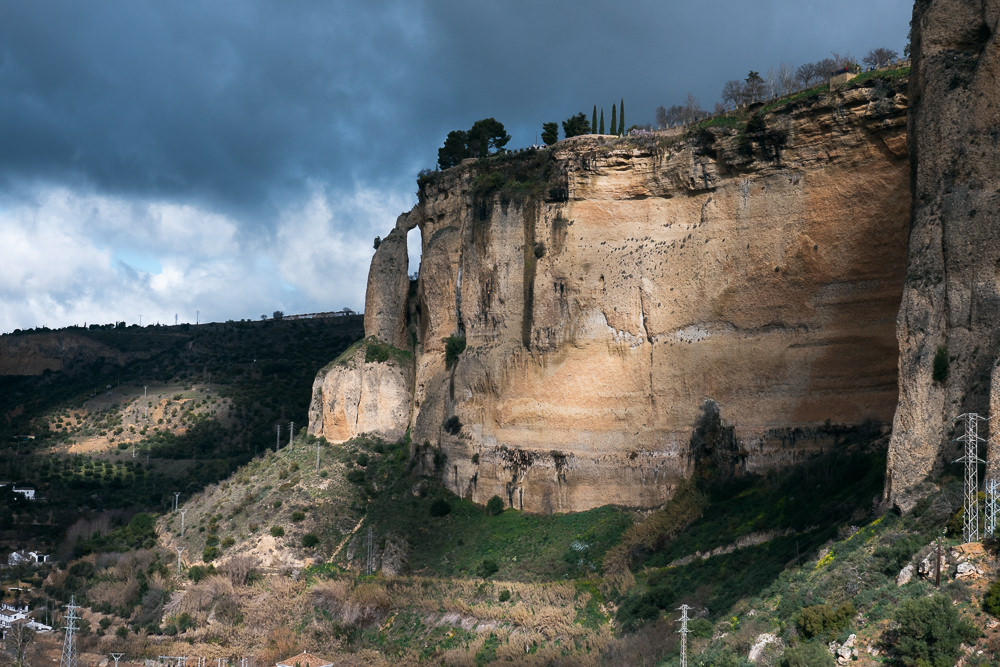
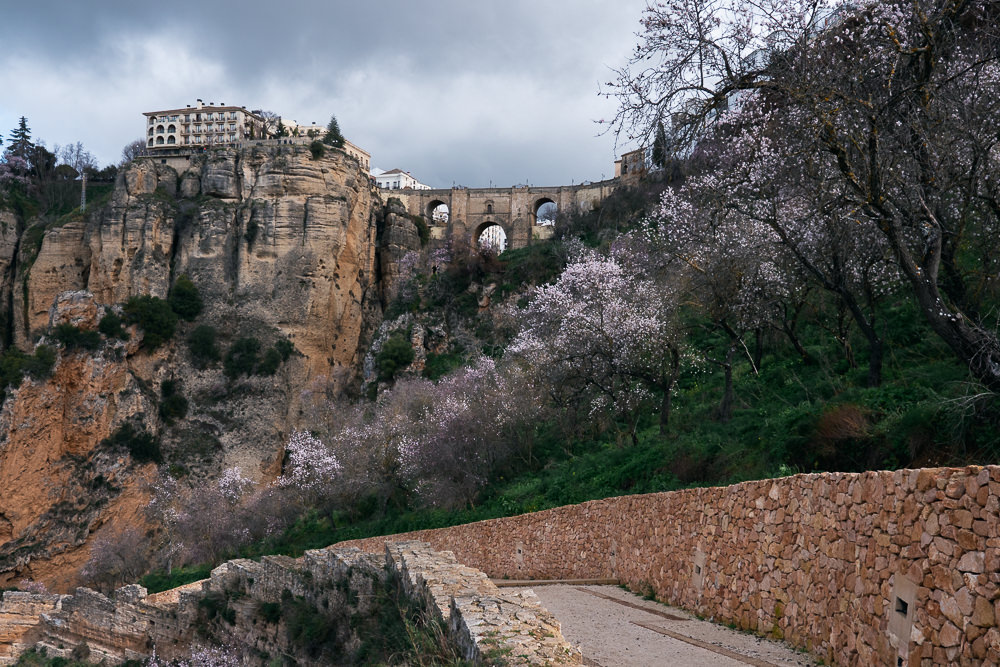
What to do in Ronda
So what’s there to see in Ronda?
Well, your first stop should clearly be its impressive bridge.
While the town has many monuments, including ones dating back to the times of Arab rule, this bridge is actually a relatively newer one. The Puente Nuevo (New Bridge) was constructed in 1793 and took 34 years to build. It is obviously Ronda’s postcard feature, so you can expect plenty of tourist restaurants and souvenir shops clustered around it.
If you’re curious for a closer look, just walk to the Mirador de María Auxiliadora [map] where you’ll find a path into the canyon. If you go to the foot of the bridge, you’ll find a tunnel through the rocks with some small dams and other concrete structures behind it.
(By the way, this is not the water mine.)
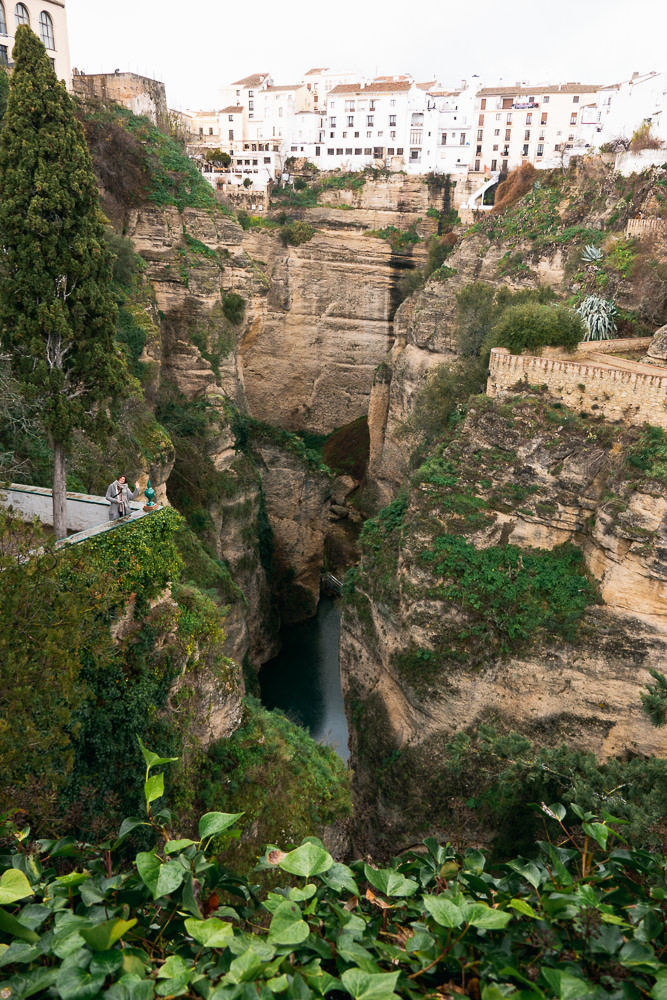
A second worthwhile sight is the La Casa del Rey Moro, or House of the Moorish King. It’s a bit of a misnomer as the house was constructed well after the Moorish times and never had a king living in it. The villa also happens to be totally derelict and inaccessible.
However, it sits right on top of the Water Mine, which is an intriguing structure dating from the times when Ronda was under Moorish rule.
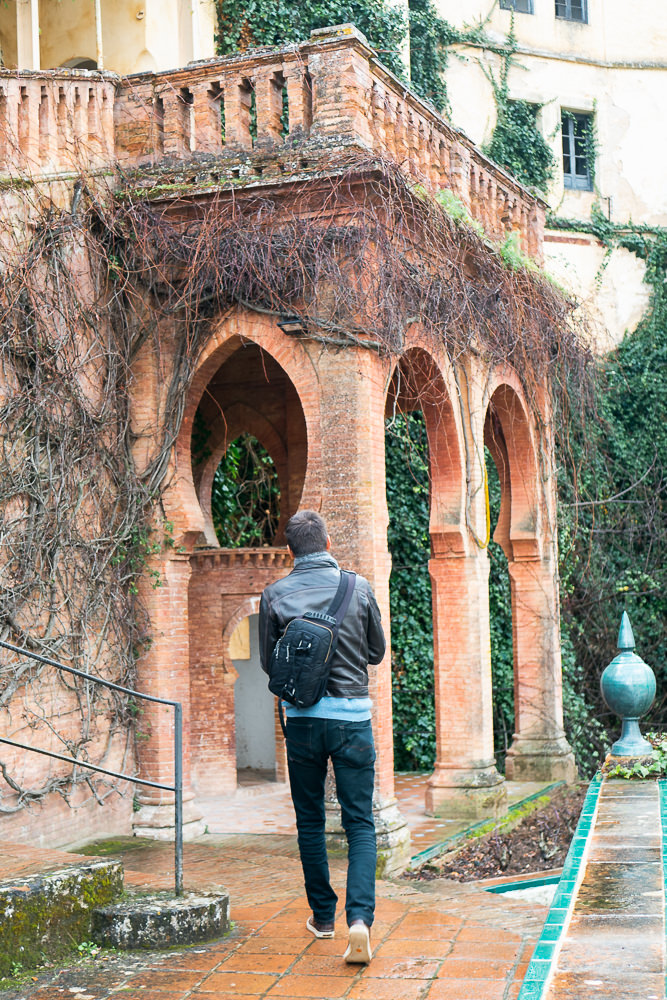
I loved making my way down the many stone stairs of the Water Mine to the base of the canyon, where a small door leads to a platform. The hidden structure was originally built in the 14th century to carry water from the river up to the town using a ferris wheel as well as slaves using buckets. It was basically a secret military site designed to make Ronda more resistant to sieges.
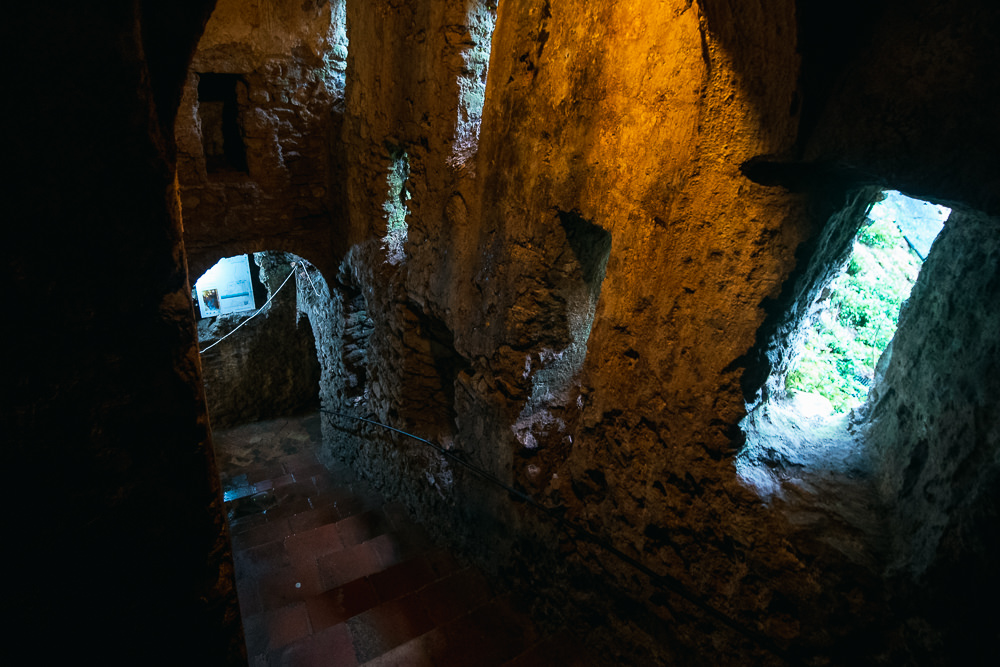
Take just one glance at Ronda’s location and you’ll see it’s in an amazingly defensible location, protected on one side by a deep canyon and on the other side by castle walls on a hill. It’s surely why there’s been a settlement here since Roman (or even Celtic) times. But this Water Mine made it even more defensible, as it ensured a stealthy supply of fresh water even if the town was surrounded by enemies.
Entry to the Water Mine and the villa’s gardens costs 6 €. What the cashier neglected to tell us was that there’s a free audio tour included, which will give you a lot more context. You just need to download an app, which is Android-only.
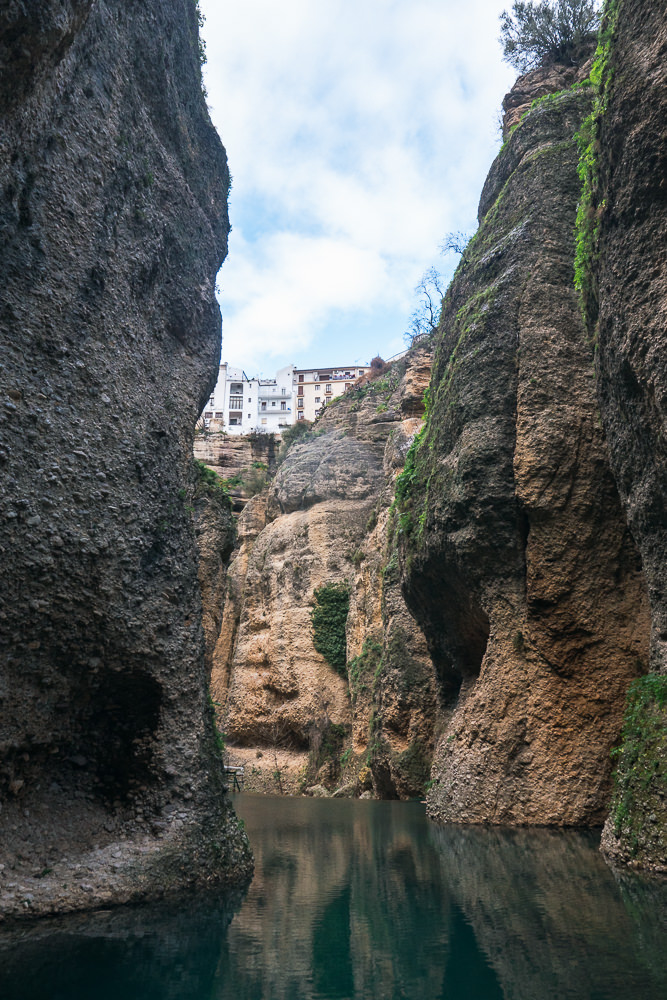
The third major sights in Ronda is the Plaza de Toros (bullring), which I didn’t have a chance to see on my visit. Dating back to 1785, it was once home to the bullfighter Francisco Romero, who first introduced such things as the now-iconic red cape. Bullfights very rarely take place here anymore, now serving primarily as a museum.
Finally, a little bonus sight is the interior of the bridge. I actually completely missed this the first couple of times I visited Ronda. At one end of the bridge is a small ticket booth; pay the €2.50 entry fee and you can go downstairs to a platform around one of the bridge’s pillars, then inside the bridge where there is a hidden room. It has a (very small) exhibition on the history of the bridge and you’ll get a few unique angles on the canyon.
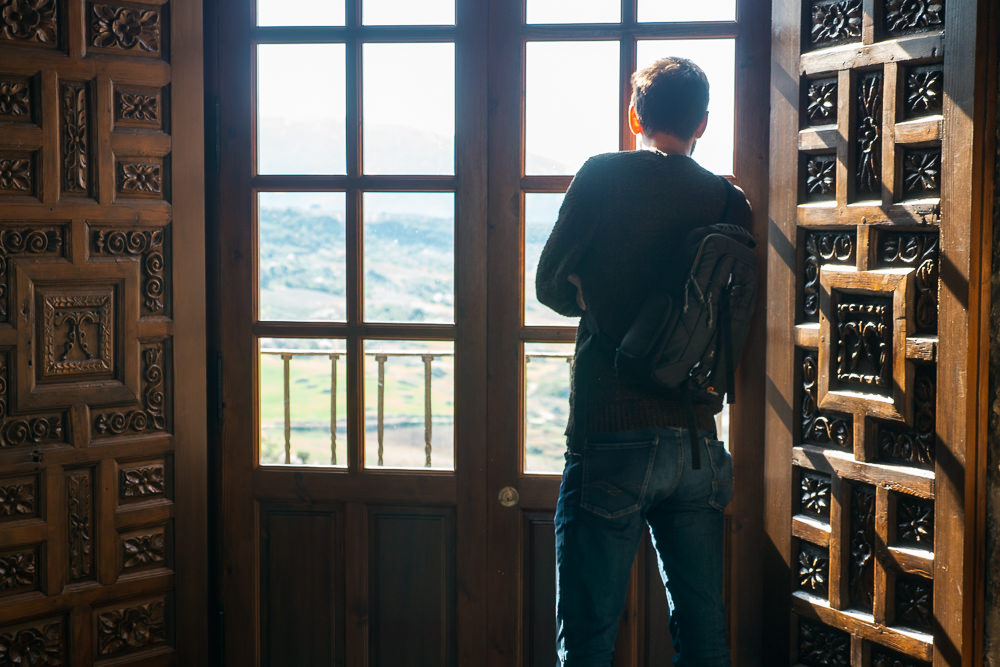
Walking around the town
If you have at least about an hour to spare, it’s highly worth walking around the town in a circle and see it from all sides. The walk I’ll describe here is about 3km or 2 miles long.
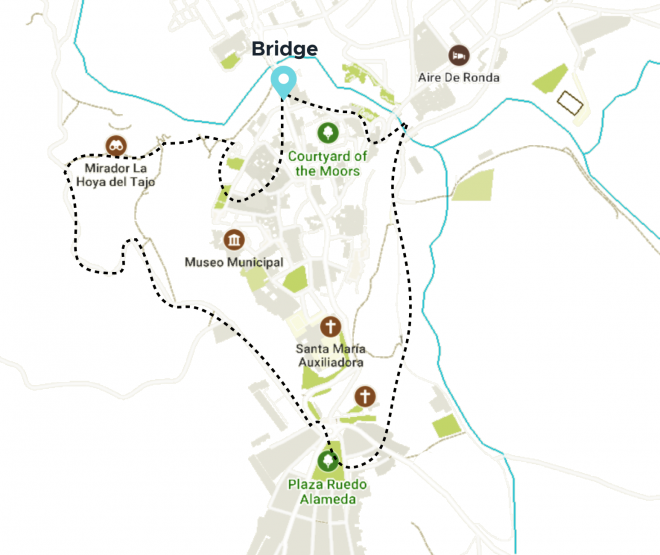
Start on top of the bridge and then to the Water Mine. From there, head further down the hill until you’ll reach two older single-arched bridges, dating to Medieval times. (One is called the Roman Bridge, but it’s not that old — they think another bridge stood here during Roman times.)
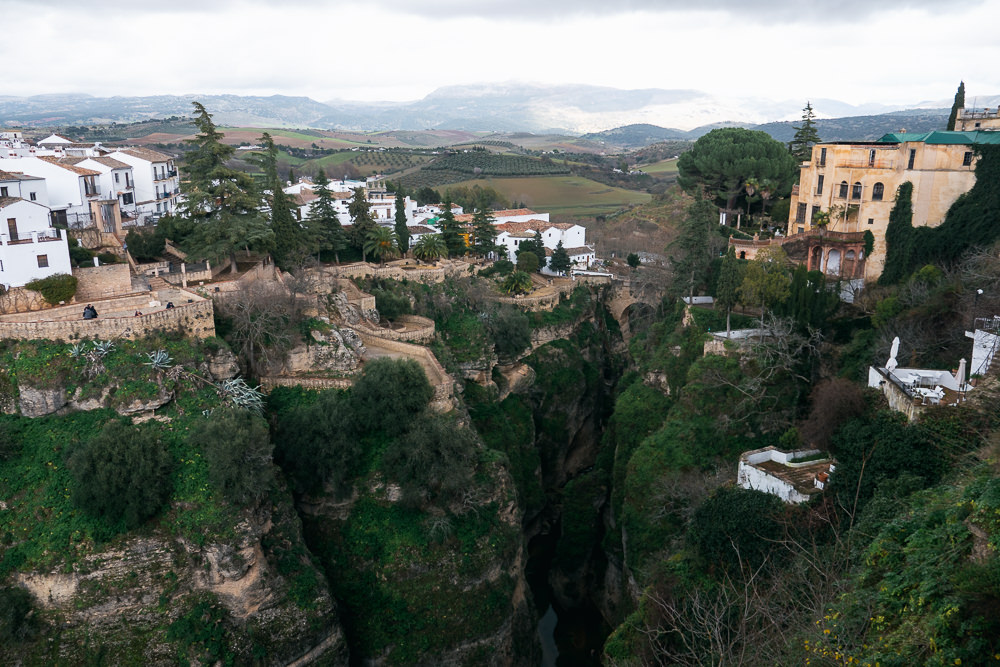
The part of town across these bridges developed a few centuries ago due to nomadic merchants, who would stay in this area with their tents and stalls to sell their wares. When Ronda flourished after the Moorish era so many merchants came that the town became completely congested, so a tax was imposed on any traders operating within the city walls. This pushed them out to this area, as well as the area south of the city gates, ultimately creating these neighborhoods.
Walk south past the fields and you’ll see parts of the old city wall still standing. I thought it was cool to see how some of the houses along the edge here assimilated bits of the old wall.
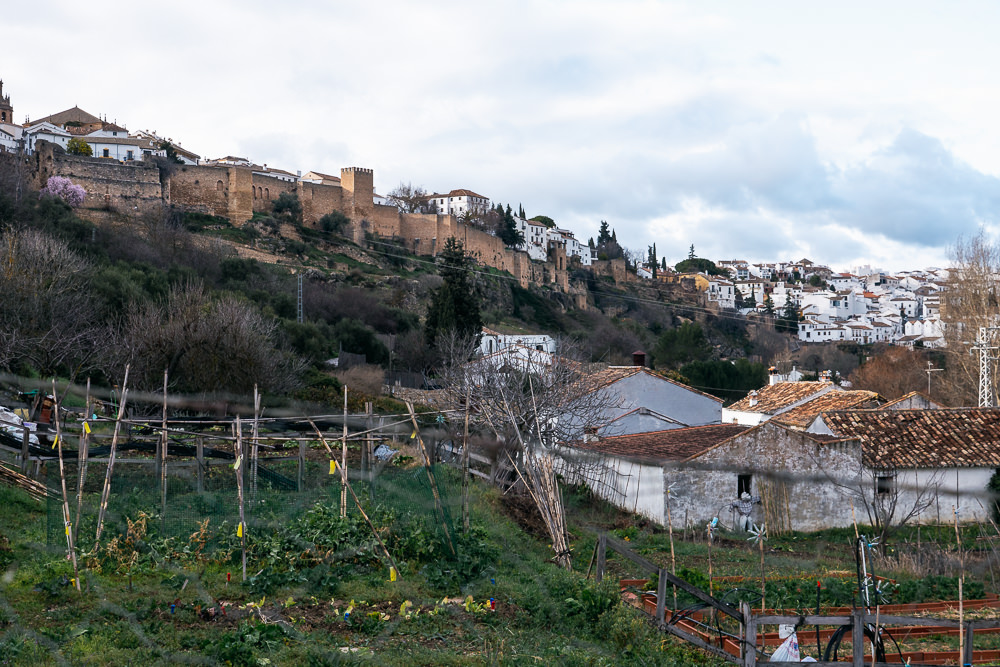
Head back into town to Plaza Rueda Almeda. From here you can see the city gates, remnants of the ancient castle, and enjoy a bunch of different tapas bars and bodegas with an authentic vibe, away from the more touristy ones near the bridge.
Finally, follow the Calle del Prado into the valley west of Ronda, which I mentioned earlier as the area we stayed in. The view from this area west of town is spectacular. There is a marked viewpoint [map] you can reach via the Carretera de los Molinos. From here, you can hike back up to the bridge.
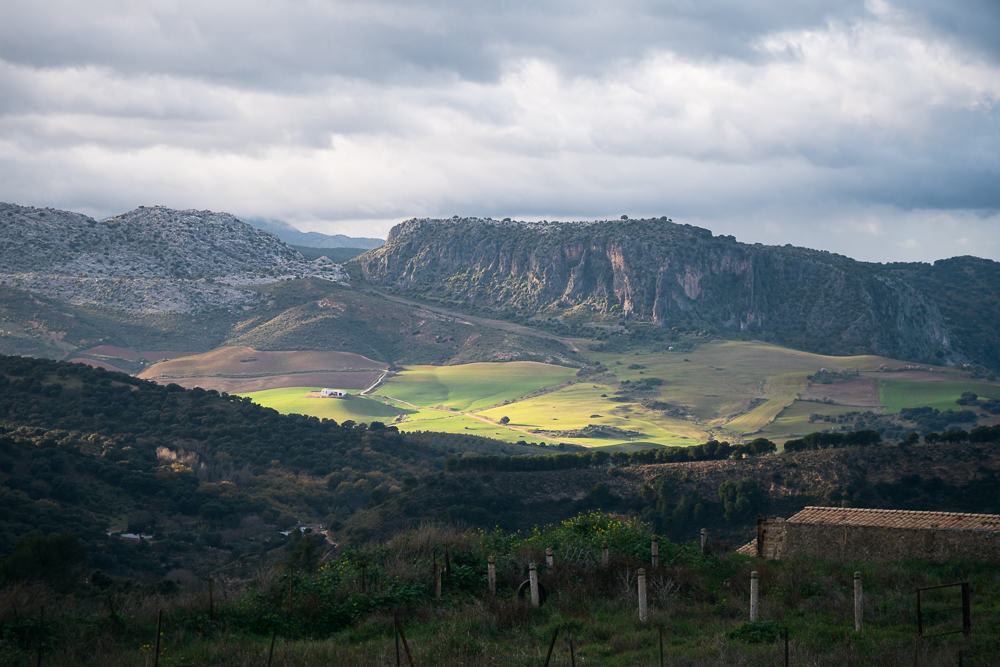
If you’re looking for a meatier hike, then the 22km long Great Track of the Serranía de Ronda appears to be a popular one. From our guesthouse in the river valley, I regularly saw hikers starting this route. It’s a marked trail and you can find more info and a PDF brochure with a map on the official site.
Tapas tips
In case all that sightseeing makes you hungry, let me share a quick couple of tips for food.
Throughout the town you’ll find many Spanish and Meditteranean restaurants with multi-language menus, some with romantic canyon views. If you’re after a traditional meal in a white tablecloth place, then this is easy to find, as are some tourist-trappy places close to the bridge.
If you’re looking for a more casual or local bite, then check out the smattering of tabernas, bodegas, and tapas bars around Plaza Rueda Almeda [map]. This plaza is just south of town outside of the touristy zone. I had some nice and cheap tapas in Bar Sanchez, a tiny local haunt where a bunch of men were playing dominoes.
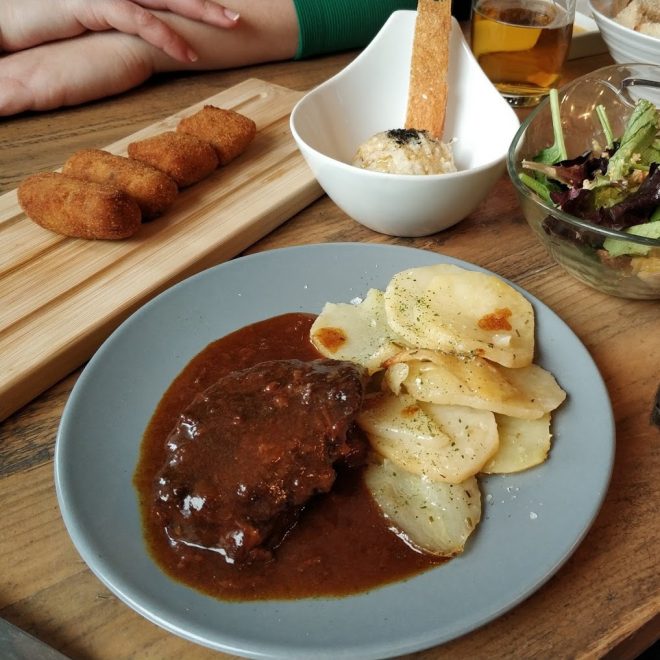
For a more modern and inventive take on Spanish tapas, as well as some fine craft beers from Basque country, try Taberna El Almacén just a few streets north of the bridge. While I love tapas as much as anyone, I do admit I get quite sick of the greasy stuff sometimes. At El Almacén the tapa is a bit lighter and creative, including ingredients like pear, walnut, truffle, white tuna, and more.
Paramotoring in Ronda
Following my trip to Ronda that this post was based on, I returned one more time in order to do a paramotoring (paratriking) flight over the city. While probably a bit pricey if you’re a budget traveler, I have to say that it’s a sensational experience and easily the best way to see Ronda is from above.
I did a 30-minute flight with Volar Andalucia, which takes off from a field just east of Ronda. You fly over the old town and its Medieval walls, circle high above Ronda’s main ridge, then fly over a nearby canyon. The views are spectacular. My girlfriend was even lucky enough to have some birds of prey join her on her flight!
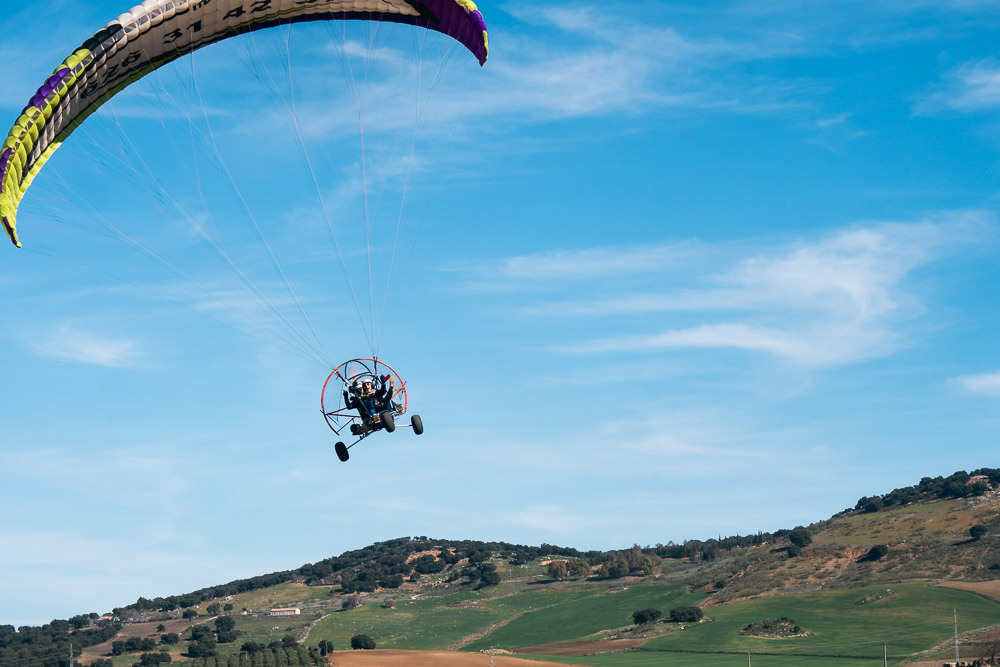
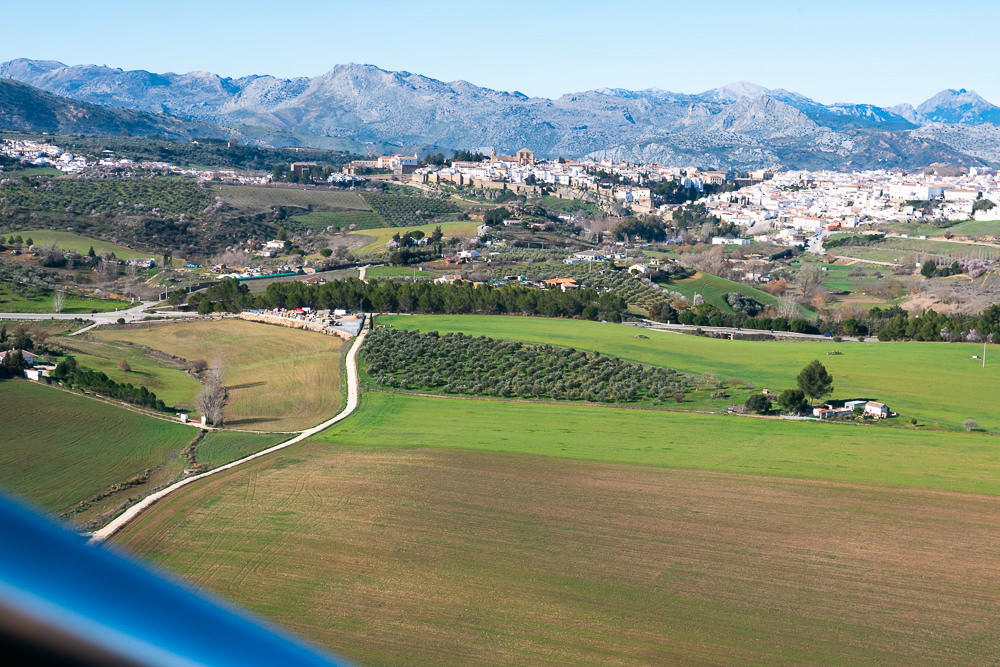
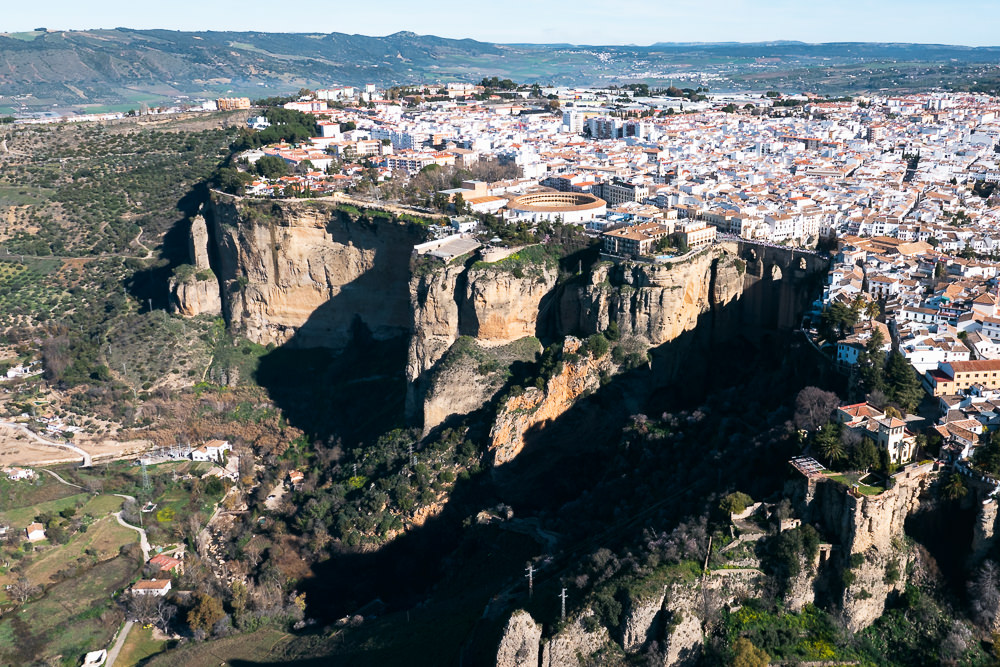
Beyond Ronda
Ronda can serve as an excellent base from which to explore the area, especially if you have your own transportation. There are a lot of amazing places within a 30 to 60-minute drive.
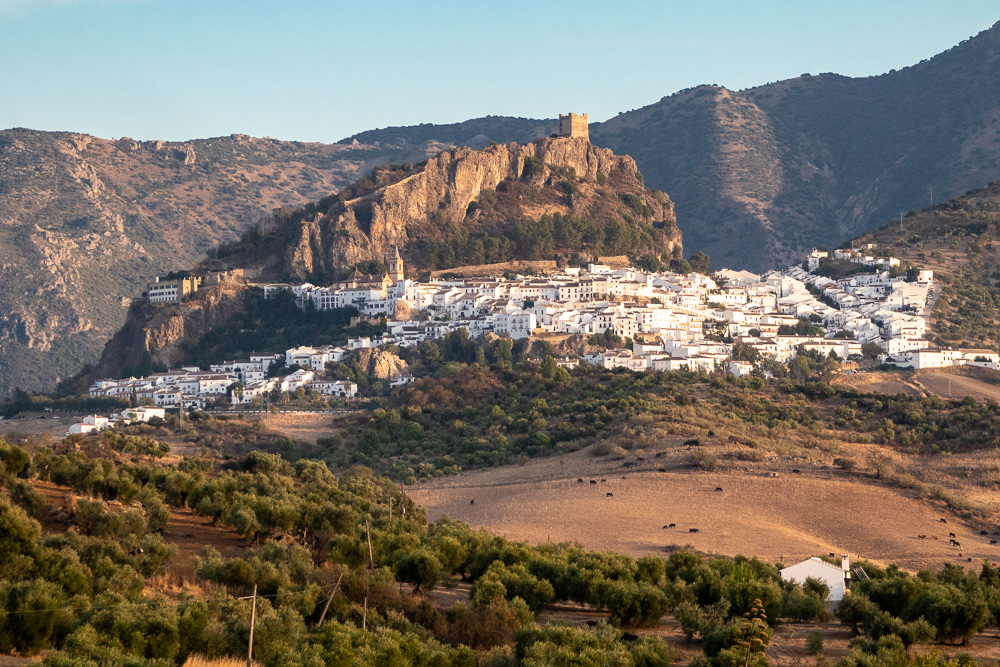
Ronda is just one of numerous gorgeous white villages in Andalucia, many of which are in the Sierra de Grazalema area. It’s hard to pick favorites — and I haven’t yet seen them all — but the towns of Setenil de las Bodegas, Grazalema, Arcos de la Frontera, and Zahara de la Sierra are all captivating in their own way. If you’re curious, see my article on the beautiful white villages of Andalucia.
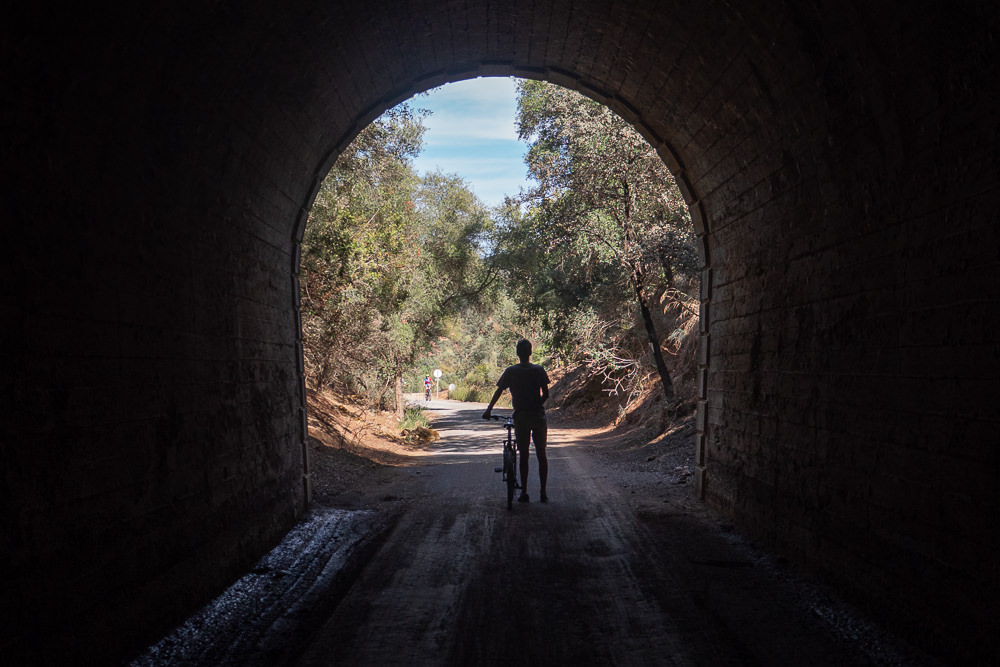
Not too far from Ronda is also the starting point of the Via Verde de La Sierra, a former railroad through the mountains (with 30 tunnels and 4 stone bridges) turned into an amazing cycling path. It doesn’t seem that well known with foreign tourists, so it’s kind of off the beaten path.
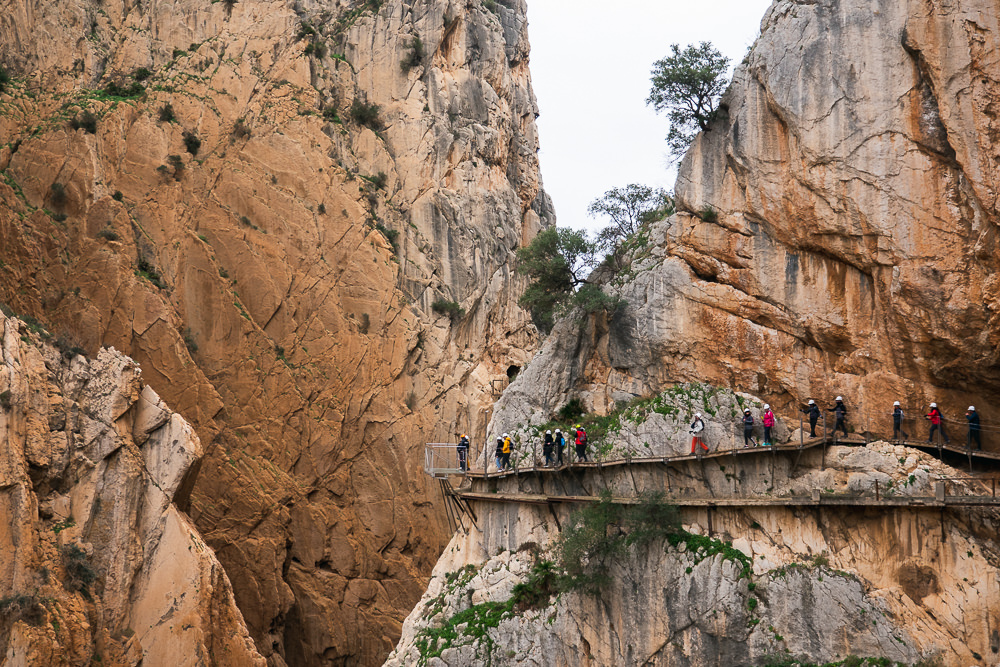
You’re also about an hour’s drive from the incredible Caminito del Rey, once known as the most dangerous hike in Spain, but recently renovated and made safe for all to pass. Originally created in 1905 to create access to a nearby dam, the boardwalk path hangs up to 100 meters high on some of the gnarly cliffs. The views are incredible and the history of the path is very interesting as well, though keep in mind that access to the Caminito del Rey is controlled and you have to book tickets well in advance.
While I got a brief first look at Ronda a few years ago, I found there’s more to appreciate than what I saw on just a quick tour stop. It’s a place with a lot of history and beautiful nature around it, with plenty to offer for a longer stay.
Some links may be affiliate links, meaning I may earn commission from products or services I recommend. For more, see site policies.
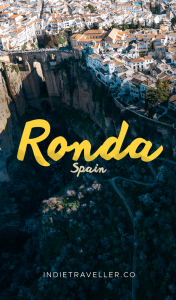
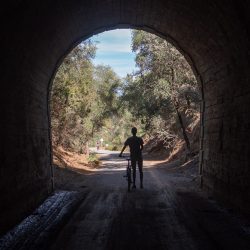
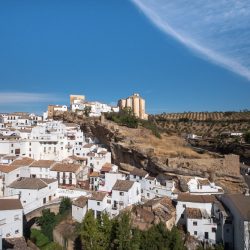




0 comments
Leave a comment
Your email address will not be published. Comments are manually moderated.